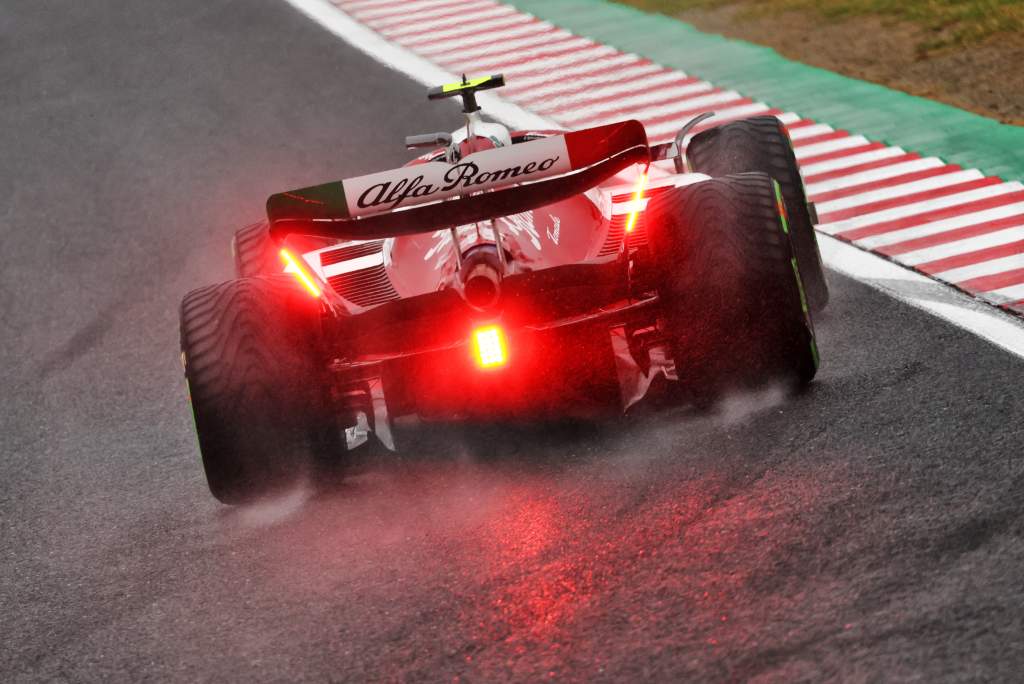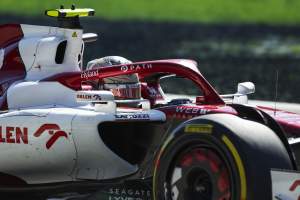Up Next

The two halves of Alfa Romeo’s Formula 1 season to date couldn’t have been more of a contrast, the team scoring 51 points in the first nine grands prix and just one in the following nine.
While that would usually indicate the team has failed to keep pace with aerodynamic development, Alfa attributes it to the erosion of its weight advantage.
While the majority of the field’s cars were heavy at the start of the season, Sauber-run Alfa Romeo was able to run on the minimum weight limit, which was raised from 792kg to 795kg before the first race of the season.
Alfa Romeo head of trackside engineering Xevi Pujolar described its weight advantage as having “disappeared”. That’s because while others have had headroom to improve in this area, with its midfield rivals all having made gains, Alfa Romeo has had nowhere to go.
Typically, 10kg is reckoned to be worth 0.3-0.4s depending on the circuit configuration. That means Alfa Romeo’s early-season advantage will have been half a second, or more, over cars 15kg over.
Pujolar also suggests that the FIA’s introduction of a metric monitoring porpoising and bouncing levels, and tackling plank flexibility, had an impact.
“It’s not that we got worse, we’re still developing and getting better,” said Pujolar when asked by The Race about Alfa Romeo’s decline in form.
“It’s just that we had an advantage at the beginning, but that advantage then disappeared at one point before the [summer] shutdown for weight reasons and in the way people had to operate the car [for] the bouncing.
“Once that reduced, now you can see that we are all there very, very close – one race we are a bit closer to Alpine and McLaren and other races it will be harder.
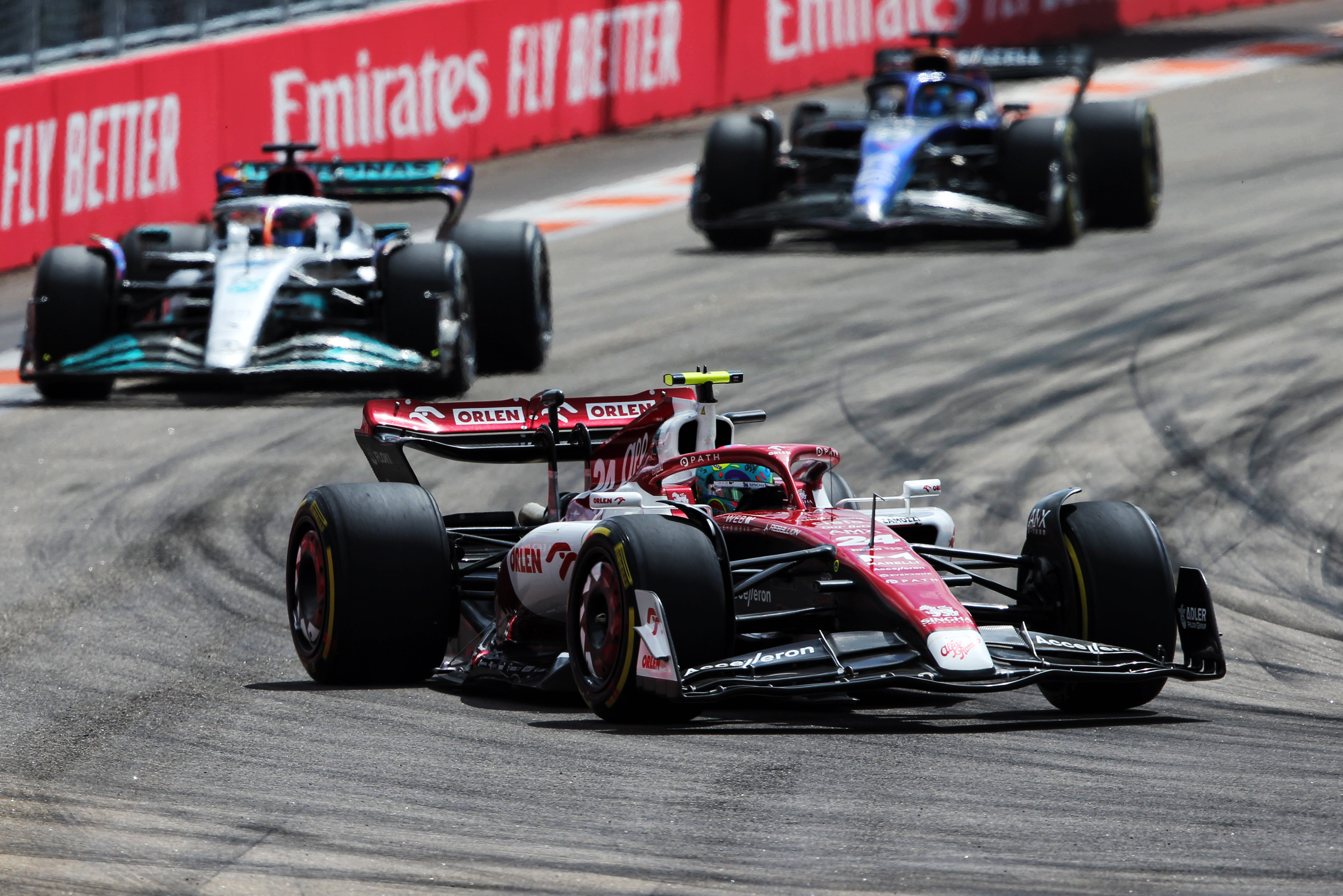
“I think that [the weight] is what made the difference at the beginning of the season.”
Alfa Romeo’s most sustained run of competitiveness came early in the season, when it was on average 1.25% off the outright pace based judged by single-lap speed across the first five events. Its average for the whole season is 1.6%, and for the last five races since the August break it’s 1.8%.
That points to a clear trend, although its failure to score more points in recent races beyond the single one Zhou Guanyu took at Monza is also partly down to unreliability, which has resulted in grid penalties and retirements.
But Alfa Romeo has pushed on with its aerodynamic upgrades, with a modified front wing appearing in Japan and more parts planned for introduction for this weekend’s United States Grand Prix.
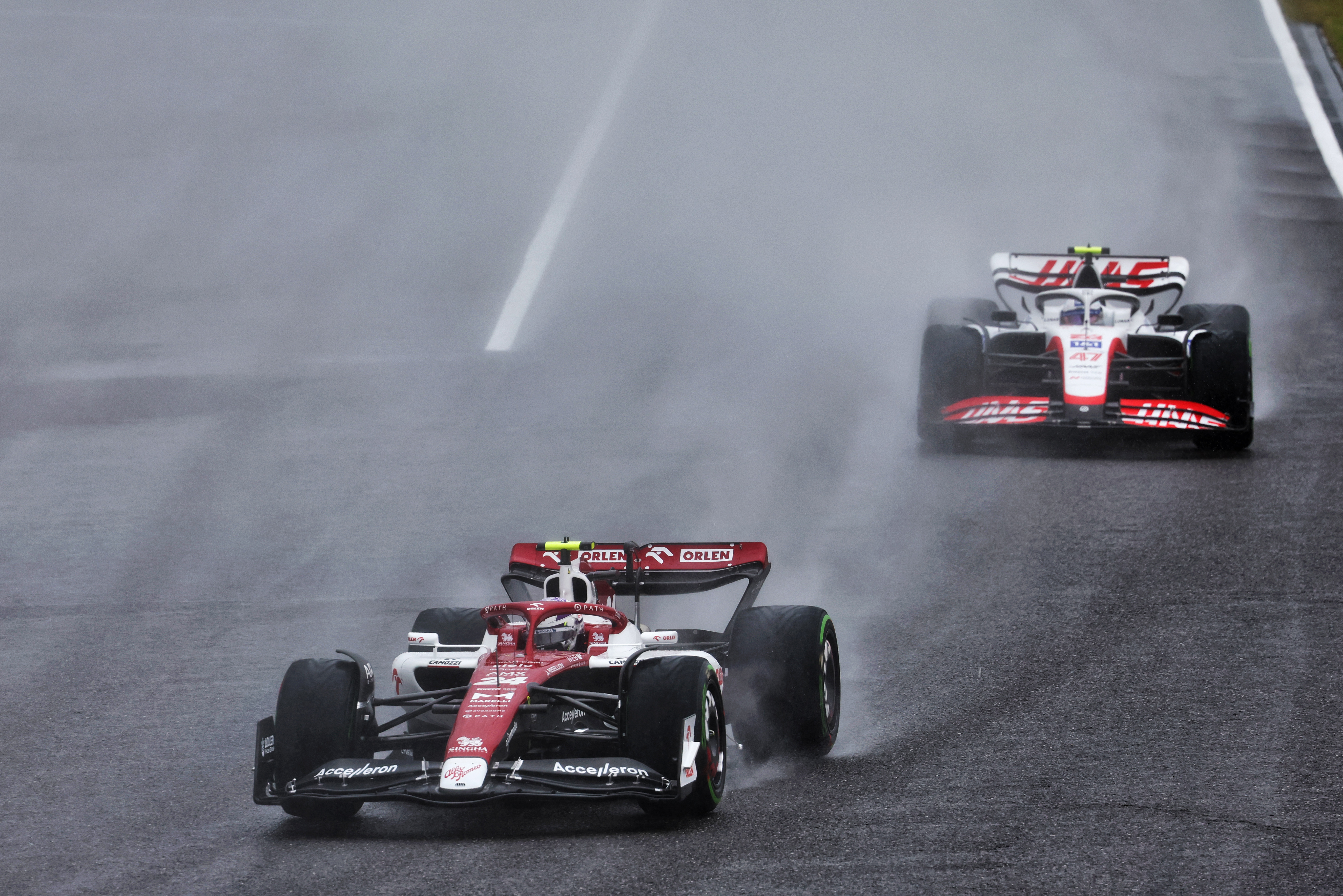
“A different wing helped us create more total downforce, focusing more in the high speed and helping us have a better balance between low and high speed,” said Pujolar of the upgrade.
“That’s the reason we pushed to have it ready for a track with a high content of high-speed corners.
“We’re happy with the performance, we missed Q3 only by 15 milliseconds after a bit of an issue with some of the DRS deployment in T7-8 which cost us more than that, so theoretically we should have been in Q3.
“We did quite a lot of work with that wing before we came to the track. The question is, does the wing behave as we expected?
“It was pretty much there. We did a lot of driver-in-loop simulator [testing] for several sessions. We planned on Friday to run with rakes etc but we had to cancel all that because of the rain.”
The Austin upgrades are hoped to deliver more performance for the final four weekends of the season.
However, the fact that FP1 will be a Pirelli tyre test session will have an impact on the team’s ability to evaluate its new parts.
“The tyre test at Austin makes things difficult,” said Pujolar.
“Because we lose time on finetuning our new package and depending how much the new front tyre changes the balance we will have to change our set-up then rebalance it again.
“But it’s useful for ’23 because it gives us an idea of what mechanical and aero balance we need to be looking at.”
GARY ANDERSON on Alfa’s new front wing
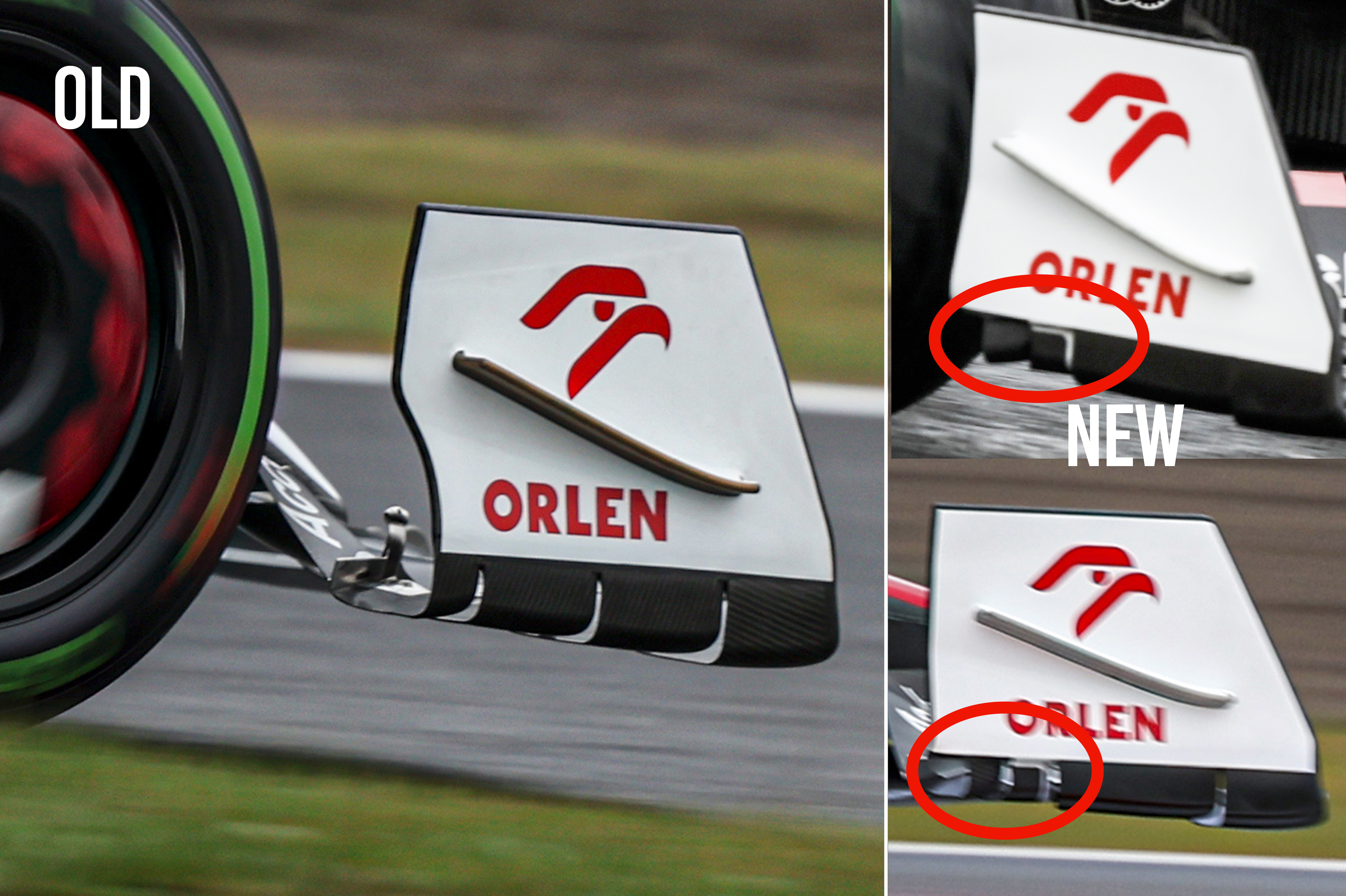
Alfa Romeo introduced a revised front wing endplate for the last race at Suzuka.
Along with the recent modifications to the rest of the front wing, I suspect it is trying to get more front downforce.
This area circled in red is moving rearward and opening up the flow in the lower corner where the flaps join the endplate. Mercedes did this slightly differently, but to a greater extent earlier in the season.
If you can connect this airflow to the tyre squirt where the airflow is forced around the front tyre contact patch when the front tyre rotates onto the track surface, it will scavenge more flow over and under the front wing and pull it around the outer sides of the front tyres, creating that dreaded word ‘outwash’.
This will improve the performance of the front wing further inboard, giving the more front load.


